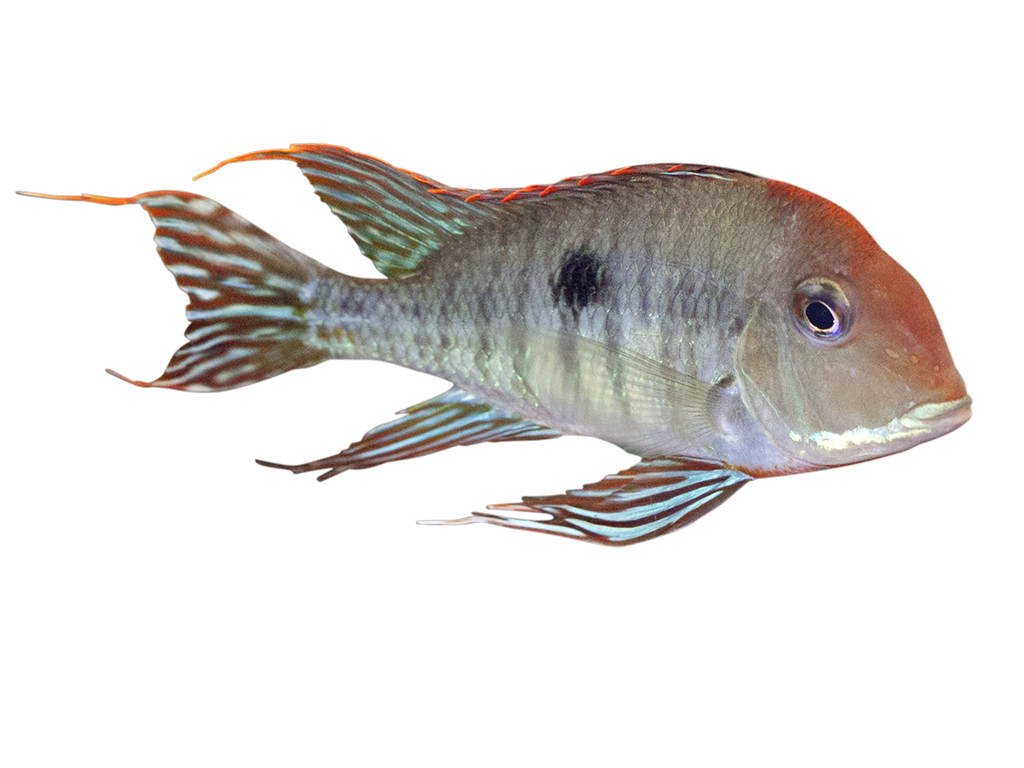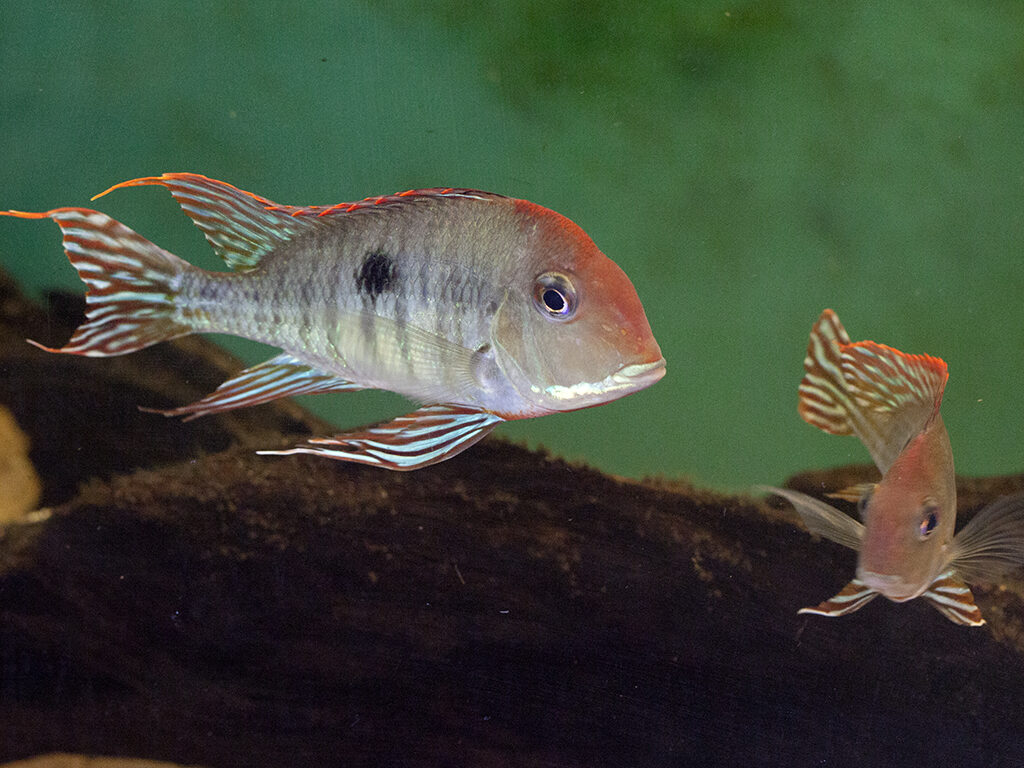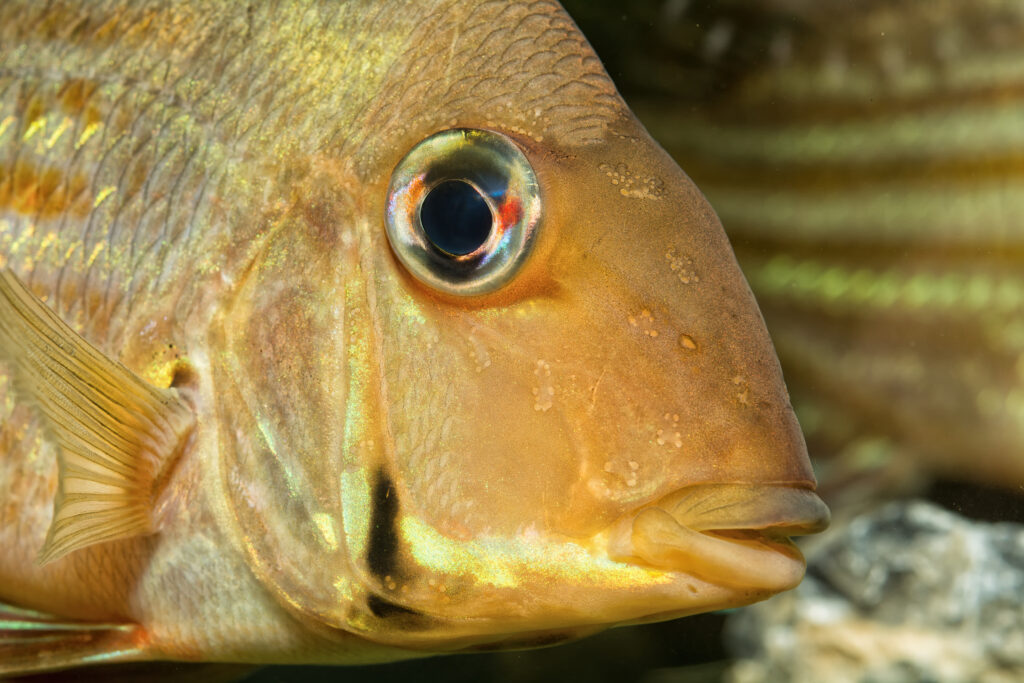Tapajós orange head
Geophagus sp.

Swims in flooded forests
The Tapajós orange head is a fish that inhabits freshwater rivers. It prefers a bed of fine-grained sand, with roots, branches and boulders. Despite its Swedish name, which means “Soil eater”, the orange head tapajo does not feed on soil. It gets its name because it sucks in and sifts sand and other bottom material in order to access food. Anything that isn’t food the fish spits out again. During the rainy season, when the forests around the rivers where the species lives are flooded, the orange head tapajo will swim into the flooded forest areas.

Photo: Johanna-Rylander-Malmö-Museums
Incubates the fry in its mouth
The Tapajós orange head is a highly active fish. The male and female, who pair up during spawning, are very aggressive towards other members of the species. After mating, the female lays her eggs on rocks or tree roots. The eggs hatch after 2-4 days after which the parents take the larvae into their mouths. They will then take turns holding the larvae in their mouths for 8-10 days until they are big enough to survive in the open.

Distribution worldwide
Tapajós River in
South America.
White marking = Distribution

Threat based on the Red List

Trade regulations
CITES: Not listed.